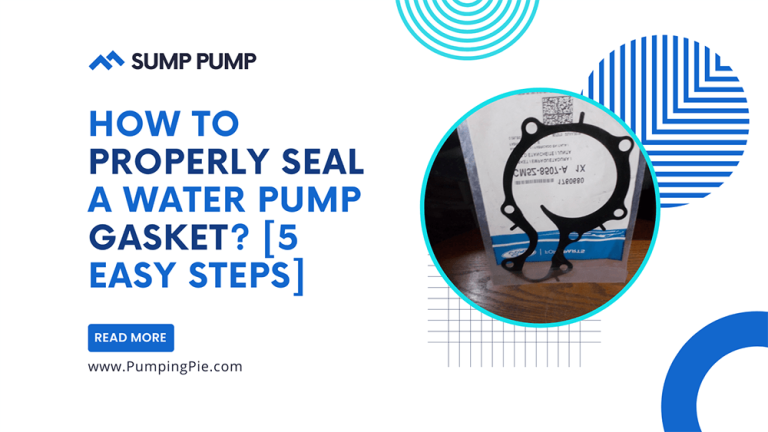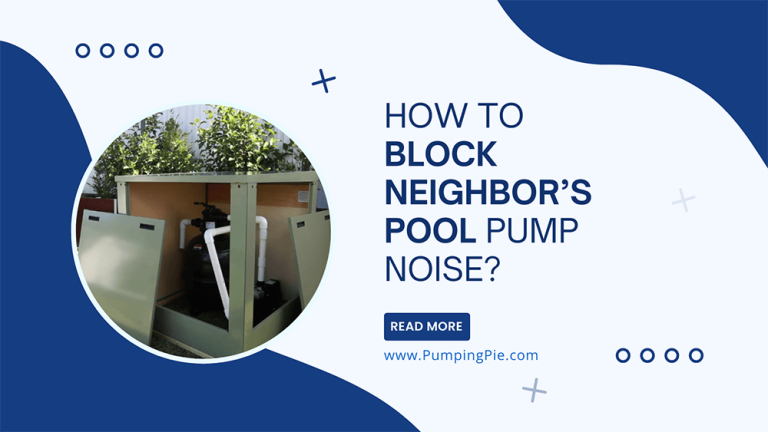Sewage Pump vs Grinder Pump: What is the Difference?
Sewage and grinder pump are very common two names when it comes to cleaning septic tanks or any water waste. The two pumps are used interchangeably because they’re connected to the same system.
However, what’s the difference between a sewage pump vs grinder pump?
A sewage pump is mainly used for emptying the septic tank’s contents. On the other hand, a grinder pump is used to grind sludge and solids, which are solid waste. Though both devices perform similar operations, they’re distinct.
Let’s break them down in a more detailed way.
Contents
What Is A Sewage Pump?
- Zoeller Waste-Mate 267 0001 is a heavy-duty submersible sewage, effluent, or dewatering automatic pump with 1/2 HP
- Ideal for residential & commercial use; Passes 2" spherical solid waste with plastic impeller
- Float-operated sewage pump with a 2-pole mechanical switch & non-clogging vortex impeller design
- Durable cast engineered construction utilizes ASTM Class 25 cast iron for switch case & pump housing
- Automatic discharge with integral float switch is completely submersible, watertight, & dust-tight
A sewage pump is a multi-stage device that moves raw sewage and wastewater from the basement toilet. It consists of an impeller located at the bottom of either the liquid or gaseous phase inside the pump and two sets of vanes that transport the fluid.
Type Of Sewage Pump
1. Centrifugal Pumps
These pumps are used in various industries to remove liquids and slurry from wet or dry process streams. Centrifugal pumps operate at speeds ranging from 1000-3000 RPMs.
2. Pneumatic Ejectors
They use air as the fluid medium. Pneumatic units apply for high and low pressure, large and small capacities, and vacuum applications.
3. Reciprocating Pumps
These pumps operate in a continuous rotary motion using an external power source to generate the rotating force.
What Is A Grinder Pump?
- Heavy cast iron construction
- 115V single phase
- Patented V-Slice cutter technology
- Shreds difficult solids such as feminine products, rags, towels and wipes
- Includes: Automatic switch, 10' power cord
Grinder pumps are compact devices that pump and discharge water and other solid sewage. They use a combination of high pressure and turbulent motion to break down the solids into smaller pieces.
These pumps are well suited for use in cases with little space for installing mechanical equipment or piping.
Types of Grinder Pumps
1. SPC (Semi-positive displacement)
Semi-positive displacement pumps are used in low-head applications. These pumps are slower and more cost-effective for low-pressure applications.
2. Centrifugal
A Centrifugal pump is used in high-pressure applications. These pumps can produce a vortex, and they are faster than SPC pumps.
Comparison Chart of Sewage Pump vs Grinder Pump
| Traits | Sewage Pump | Grinder Pump |
| Pump capacity | 200 gallons per min | 70-80 gallons per min |
| Power | 1.01-2.9 hp | 1-2 hp |
| Distance cover | 750 feet | 1000 feet |
| Power Requirements | High | Low |
| Installation Space Required | More | Less |
| Capability to Destroy Solid Matter | Low | High |
| Noise Level | Low | High |
| Cost | Less expansive | More expensive |
Characteristics of Sewage Pump and Grinder Pump
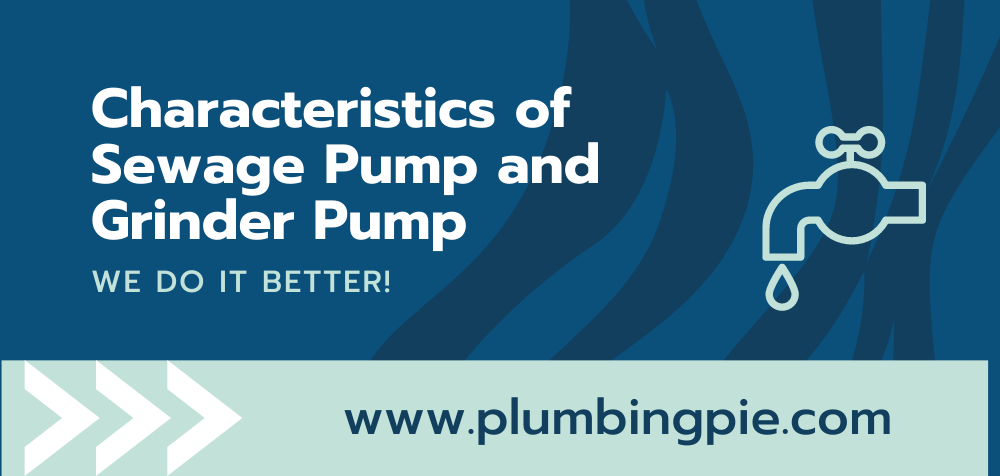
Though a grinder pump is a subtype of sewage pump, there are some differences in their characteristics. Let’s take a deep dive.
Pipe Size
The size of a pump is determined by the amount of liquid that needs to be passed through. A sewage pump can handle pipes of up to 2 inches in diameter. Grinder pumps can handle lines between 1.25 inches in diameter.
Flow Rate
The flow rate of a sewage ejector pump is much higher than a grinder pump, which means that it can process more significant amounts of liquid faster.
Efficiency
Grinder pumps are more effective because they use pressure and turbulent motion to break down solid matter into smaller pieces. The rougher texture of the ground material causes it to break down faster.
Pressure
The operating pressure of a grinder pump is up to 10 times lower than a sewage pump. This makes it ideal for pumping liquids with large pieces of solid matter that could damage the pump if it worked at high pressure.
Noise
Grinder pumps are known for their high noise levels, making them less than ideal for smaller businesses or locations requiring a quieter power source. Sewage pumps are known for their quiet operation, even when used in large buildings or industrial plants.
Installing
Sewage pumps are large, heavy machines that need special equipment and workers to help with installation. However, a grinder pump is more compact and easy to install. It can be attached to a pipe without lumber or a frame.
Power Supply
A sewage pump takes power from an external source due to its size and weight. A grinder pump does not require an external power source because it uses the force generated by the impeller to generate pressure within the pipe itself.
When To Use A Grinder Pump and Ejector Pump?
A grinder pump may be necessary when there is not enough space around a pipe for installing mechanical equipment or piping. Grinder pumps are also used in cases where there is a need for a lower flow rate than a sewage pump.
Sewage ejector pumps are used for homes with old systems designed for gravity flow but have been required to install pumping equipment due to failing septic systems.
There are some instances where a sewage pump and a grinder pump are necessary. The following are some examples:
- Oil processing plants handle highly corrosive substances that could damage the pipe if handled by the sewage ejector.
- Sewage ejector pumps are used for handling large amounts of liquid. A grinder pump may be helpful if the pipe runs for a long distance before being connected to the sewer line.
FAQs
How long do grinder pumps last?
The life expectancy of a grinder depends on how well you maintain it. The average lifespan is eight years. Regular cleaning and oiling the motor is key to extending the machine’s life.
How do you maintain a sewer grinder pump?
Since they are used in septic tanks, they must be cleaned regularly. Check the motor oil level and impeller for any clogs. Replace the bearing and shaft seals if needed.
How do I know what size sewage pump I need?
The pump size depends on how much water you’re pumping and the diameter of your sewage drain. Total dynamic head and flow are the most important numbers to consider. This information is listed in the specifications of the pump.
Can a sewage pump be used as a sump pump?
Yes, it is possible to use a sewage pump as a sump pump, but it is not recommended because sewage pumps are not designed for this purpose.
What are the best sewage grinder pumps?
Many factors affect the best choice of sewage grinder pump, including the size and specifications. Some of the best sewage grinder pumps are Zoeller 267-0001 and Waste-Mate Pump. Little Giant LG-SEW50SA 1/2 HP. Wayne RPP50 Cast Iron Sewage Pump.
Conclusion
So, that was all regarding sewage pump vs grinder pump. At first glance, the two seem pretty similar, but there are a few crucial distinctions.
However, you can use a sewage pump to remove sewage from a building, while a grinder pump grids large objects into smaller pieces. As both devices have their benefits and drawbacks, understanding them is essential to making the best decision for your home.
So, think carefully and make your call.
As an Amazon Associate, I earn from qualifying purchases.

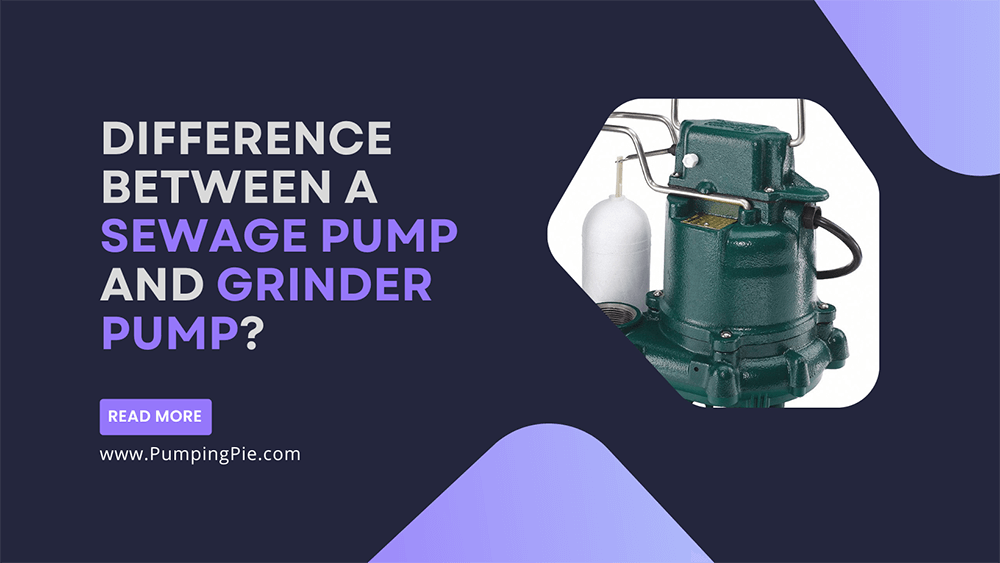
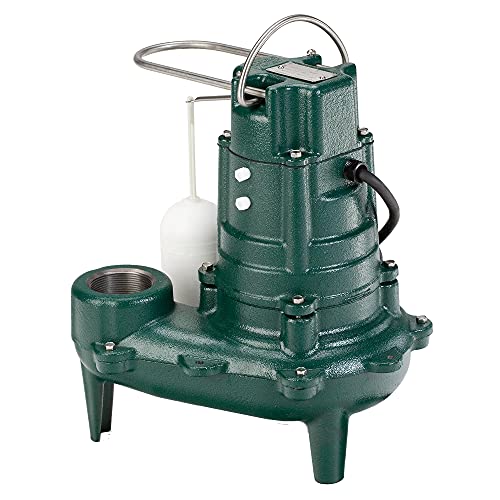

![How To Cover A Pool Pump [7 Pool Pump Cover Ideas]](https://pumpingpies.com/wp-content/uploads/2022/08/How-To-Cover-A-Pool-Pump-7-Pool-Pump-Cover-Ideas-768x432.png)
